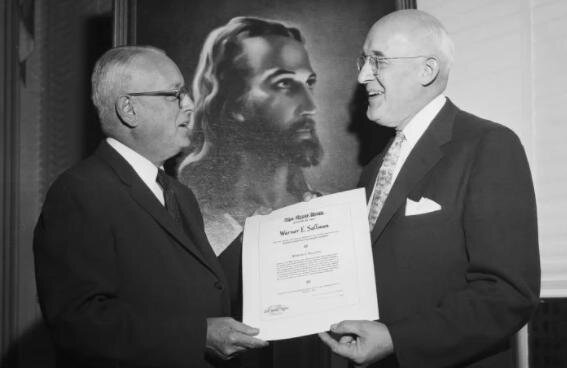How Jesus became white — and why it’s time to cancel that
The Rev. J. Manning Potts of Nashville, Tennessee, left, presents the 1957 Upper Room Award for World Christianity Fellowship to artist Warner Sallman of Chicago at a dinner meeting of church and government officials on Oct. 3, 1957, at the National Press Club in Washington, D.C. Sallman was honored for his “Head of Christ” painting, shown in background. (AP Photo/Bob Schutz)
By Emily McFarlan Miller, Religion News Service | June 26, 2020
Warner Sallman’s iconic image of Jesus has crowded out other depictions of Jesus, and some say that's a big problem. Warner Sallman's 1940 oil painting "The Head of Christ" is believed to be the most reproduced religious work of art. It's been copied a billion times, if you include lamps, clocks and calendars. It came to define Christianity for generations of Christians in the United States and beyond.
A copy of Warner E. Sallman’s “Head of Christ” painting hung in Emily McFarian Miller’s home, depicting a gentle Jesus with blue eyes turned heavenward and dark blond hair cascading over his shoulders in waves.
When Miller grew up and began to study the Bible on her own, she started to wonder about that painting and the message it sent.

